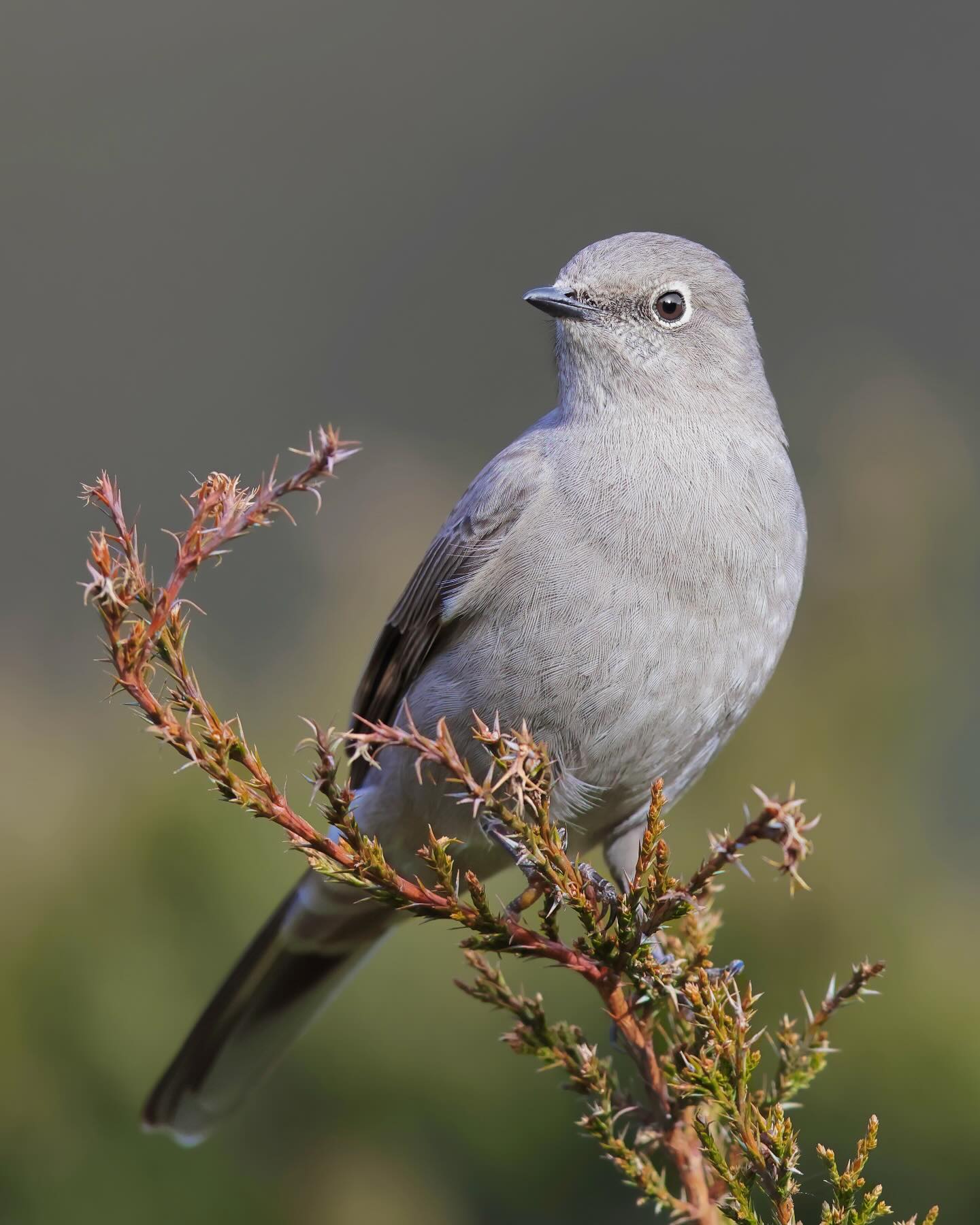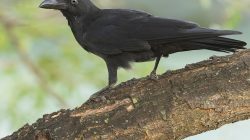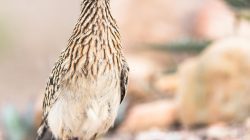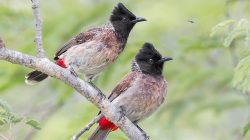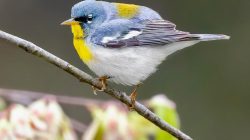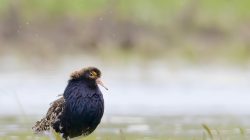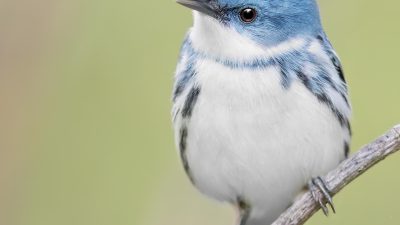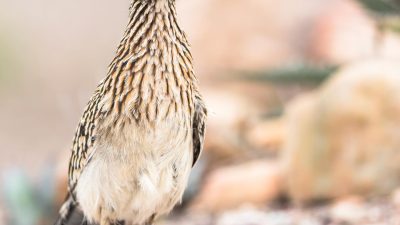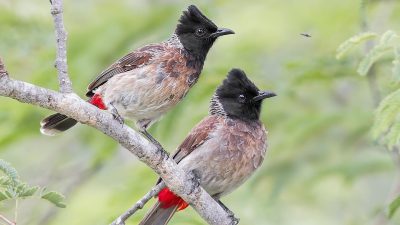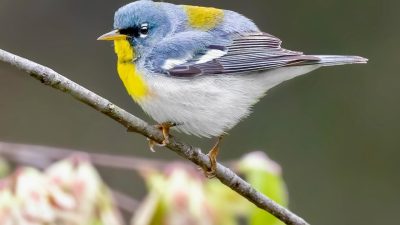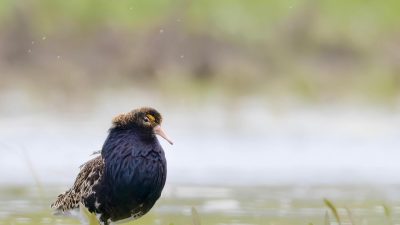Townsend’s Solitaire (𝘔𝘺𝘢𝘥𝘦𝘴𝘵𝘦𝘴 𝘵𝘰𝘸𝘯𝘴𝘦𝘯𝘥𝘪): A Comprehensive Overview
Diajar.net – Townsend’s Solitaire (𝘔𝘺𝘢𝘥𝘦𝘴𝘵𝘦𝘴 𝘵𝘰𝘸𝘯𝘴𝘦𝘯𝘥𝘪), a solitary bird of the Turdidae family, holds an intriguing place within North American avian fauna. Known for its distinct vocalizations and unique habits, this species is a remarkable example of adaptation to a variety of habitats. The bird’s characteristics, diet, conservation status, and geographic distribution paint a fascinating picture of a creature that thrives in harsh climates while playing a crucial role in the ecosystem. This article delves deep into various aspects of the Townsend’s Solitaire, from its name origin to its conservation efforts, providing a comprehensive look at this exceptional species.
Origin of Animal Name
The name “Townsend’s Solitaire” is a tribute to the 19th-century American naturalist, John Kirk Townsend, who is credited with discovering and describing the species. Townsend, an explorer and a member of the Academy of Natural Sciences of Philadelphia, contributed significantly to the study of North American fauna. His work included detailed observations of bird species, some of which were previously unknown to science.
The term “solitaire” is used to describe birds that are solitary or engage in solitary behaviors, a characteristic of the Townsend’s Solitaire. Unlike many other birds that form flocks or communities, the Townsend’s Solitaire is typically found alone or in very small groups, especially outside of the breeding season. This solitary nature is an important aspect of the bird’s lifestyle and is reflected in its scientific and common name.
Appearance
Townsend’s Solitaire is a medium-sized bird, known for its sleek and muted appearance. The adult bird has a grayish-brown plumage, with subtle variations in its tone depending on the light. Its back is a drab brown, often tinged with olive or gray, and the underparts are a lighter gray, giving it a somewhat understated yet elegant look. The bird’s wings are slightly darker with a notable white wing bar that becomes more visible in flight.
A key feature of Townsend’s Solitaire is its long, slender tail, which it uses skillfully for balance as it perches or hops around its habitat. The bird’s head is rounded, with a sharp, slightly hooked bill that is adapted for catching and feeding on its diet of insects and berries. Its eyes are dark, giving it a mysterious, watchful look, which complements its generally elusive nature.
Townsend’s Solitaire is often described as having a rather subtle and understated beauty, which fits with its preference for quiet, secluded environments. Its overall appearance reflects its ability to blend into the surroundings of rocky outcrops, coniferous forests, and the interior of dense shrubs, where it spends much of its time.
Distribution
Townsend’s Solitaire is primarily distributed across North America, with a range that extends from the western parts of the continent to the Rocky Mountains, including areas of Canada, the United States, and northern Mexico. It is a bird most commonly associated with the highlands and montane environments, particularly in regions that offer rocky outcrops, coniferous forests, and juniper groves.
In the United States, the species is found from the Pacific Northwest down through the mountain ranges of California, Arizona, and New Mexico. It thrives in environments that provide its specific needs, including cold, arid landscapes with minimal human disturbance. It is also common in the Rocky Mountains, where the terrain offers a combination of forests and open spaces that allow for the bird’s solitary lifestyle.
Although it is most concentrated in the western parts of North America, Townsend’s Solitaire has also been spotted in parts of Mexico, including the Sierra Madre Occidental in the northern portion of the country. The bird is migratory, with some individuals venturing into lower elevations during the colder months, although it largely prefers higher altitudes for nesting and feeding.
Geography
The geography of the Townsend’s Solitaire’s habitat is crucial to understanding its life and behavior. This bird is typically found at elevations ranging from 4,000 feet to over 10,000 feet, often inhabiting mountainous regions, rocky canyons, and sparse forests. These areas provide the bird with both food and shelter, and the harsh conditions of these highland environments help limit competition with other bird species.
In addition to the rocky outcrops and coniferous forests, Townsend’s Solitaire is closely associated with juniper and piñon pine trees, where it forages for berries and insects. These trees are abundant in the bird’s preferred habitats, and their berries, along with other fruits and insects, make up a significant portion of the bird’s diet. The geography of these regions, with their rugged terrain and scattered vegetation, helps create an environment that is both remote and ideal for the solitary lifestyle of this species.
Habits and Lifestyle
One of the most striking features of Townsend’s Solitaire is its solitary lifestyle. Unlike many songbirds that gather in flocks during migration or breeding, Townsend’s Solitaire tends to remain alone for most of the year. During the winter months, it is often seen perched quietly on branches or hopping on the forest floor in search of food. This bird does not migrate in large groups but instead may move between higher and lower elevations based on food availability and weather conditions.
Townsend’s Solitaire is highly territorial, especially during the breeding season. Males will sing to establish their territory, often from a high perch or a prominent rock. The song is a melodic, flute-like call that is easy to identify, though it is not particularly loud or attention-grabbing. This solitary behavior is also reflected in the bird’s nesting habits, where it builds its nest in secluded areas, often among dense shrubs or on rocky outcrops, away from the reach of predators and other animals.
Despite its solitary tendencies, the Townsend’s Solitaire is also known to exhibit certain social behaviors during the breeding season. Pairs will form temporarily to mate, and both parents are involved in the care and protection of the young. However, once the young birds fledge, they too will adopt a solitary lifestyle, further reinforcing the bird’s name and its characteristic behavior.
Diet and Nutrition
The diet of Townsend’s Solitaire is diverse, though it primarily consists of fruits, berries, and insects, with a strong preference for juniper berries. These berries are an important part of the bird’s winter diet, as they provide a rich source of calories and nutrients. During the summer months, the bird will supplement its diet with insects, including beetles, ants, and caterpillars, which it catches while foraging on the ground or in trees.
Townsend’s Solitaire is known to forage in a methodical manner, often hopping along the forest floor or carefully pecking at the foliage of trees. Its strong, curved bill helps it extract berries from dense juniper bushes, while its sharp vision allows it to spot insects from a distance. The bird’s diet is adapted to the availability of food in its environment, and it is capable of surviving in harsh conditions where other species might struggle.
The bird also has a unique feeding behavior during the winter months when food is scarce. It will often cache excess food, storing it in crevices or hidden places for later consumption. This behavior helps the bird survive through colder periods when fresh food is not readily available, allowing it to maintain its energy reserves.
Population
The population of Townsend’s Solitaire is relatively stable, though it has shown some fluctuations in response to environmental changes. In the United States, the bird is considered a species of least concern, with a healthy population across its range. However, like many species that inhabit remote and rugged terrains, the bird’s population is somewhat difficult to estimate with complete accuracy. Surveys suggest that the bird’s population remains consistent, though there are concerns about the impacts of habitat destruction, climate change, and invasive species.
Despite these challenges, the bird has a relatively widespread presence across its habitat range. Studies show that while Townsend’s Solitaire populations may decline in areas where human activity disrupts natural habitats, the bird seems to thrive in areas that remain undisturbed by large-scale development or significant changes to the landscape. Conservation efforts have helped protect the bird’s habitats in certain regions, ensuring that it has access to the spaces it needs for feeding, breeding, and survival.
Number of Populations
The number of Townsend’s Solitaire populations is not precisely known, but the bird is widespread across its geographic range. According to bird surveys and conservation organizations, the bird is present in several isolated populations throughout the western United States and parts of Mexico. These populations are scattered across a variety of mountain ranges, including the Sierra Nevada, the Rockies, and the mountains of northern Mexico.
While there are no immediate concerns about the bird’s population size in general, certain local populations may be more vulnerable to environmental pressures. For instance, populations in areas that experience deforestation, urbanization, or significant climate shifts may face challenges in maintaining their numbers. Therefore, it is important for conservationists to monitor these populations to ensure that they do not become threatened.
Conservation
Townsend’s Solitaire is currently classified as a species of least concern by the International Union for Conservation of Nature (IUCN), with no immediate threats to its overall population. However, this status does not mean the bird is free from conservation concerns. As an inhabitant of high-altitude habitats, the bird is susceptible to the effects of climate change, which could alter the distribution of its food sources and breeding grounds. Additionally, habitat loss due to logging, land development, and human activities poses a potential threat to local populations, especially those that rely on specific types of forested or shrubby environments.
Conservation efforts for Townsend’s Solitaire focus on habitat protection and restoration. Organizations work to preserve the bird’s preferred environments, such as montane forests and juniper groves, by creating protected areas and advocating for sustainable land management practices. In regions where the bird’s habitat is being encroached upon, efforts are being made to mitigate the impact of development and to restore degraded landscapes to ensure the survival of local populations.
In conclusion, Townsend’s Solitaire is a fascinating bird that plays a significant role in the ecosystems of North America. Through conservation efforts, careful management of its habitat, and increased awareness of its solitary nature, we can help ensure that this remarkable species continues to thrive for generations to come.
